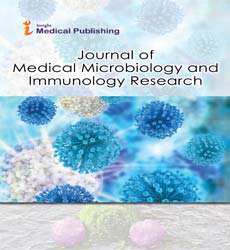ISSN : 2634-7164
Journal of Medical Microbiology and Immunology Research
Interaction & side effects of antibiotics
Abstract
Antibiotics are chemotherapeutic agents that kill or inhibit the growth of microorganisms. Antibiotics are used for the treatment of various infections. However, there are a lot of downsides to their use, which can be life-threatening. This article talks about some of the most common drug interactions between antibiotics and other drugs, as well as the most common side effects of antibiotics.
Interactions of antibiotics
Infections are common when patients are given long-term medicines for chronic conditions. The use of systemic antibiotics to treat these illnesses frequently results in pharmacokinetic and pharmacodynamic interactions between the antibiotics and one or more of the maintenance drugs, which means they can have an effect that is different from what you expected. Here are some common examples of these interactions:
1. Pharmacokinetic Interaction of Fluoroquinolones Fluoroquinolone medicines are effective against a wide range of illnesses. Several agents, however, can significantly limit fluoroquinolone absorption. If fluoroquinolones are used concurrently, divalent cations (calcium, iron, and magnesium) and trivalent cations (aluminum) might bind and form insoluble complexes in the gut, inhibiting absorption. These cations are commonly found in over-the-counter (OTC) items such as antacids, iron, and calcium.
2. Pharmacokinetic interaction of macrolides Many types of infections are treated with the macrolide medicines erythromycin and triacetyloleandomycin (troleandomycin). As a result, they are frequently used with other pre-existing medication therapies. As a result, these antibiotics have the potential to interact with other medications. Both erythromycin and triacetyloleandomycin appear to have the ability to block drug metabolism in the liver as well as drug metabolism by microorganisms in the gut, either by antibiotic action or complex formation and inhibition of microsomal drug oxidizing enzymes. Triacetyloleandomycin appears to be the more powerful inhibitor of microsomal drug metabolism of the two drugs. Research has shown that triacetyloleandomycin can have a big impact on the metabolism and clearance of methylprednisolone, theophylline, and carbamazepine. It can also make them more difficult to get rid of.
Conclusion: Antibiotics can interact with a wide range of drugs, including prescription, over-the-counter, and natural products. In addition to this, their side effects can also be mild, moderate, or severe depending on the condition. Raising awareness is the first step toward appropriate handling of these encounters. Before prescribing new antibiotic regimens, it is best practice to have a complete, up-to-date prescription list. If you have any questions, there are a number of online drug interaction checkers available, and local pharmacists are ready to help.
Open Access Journals
- Aquaculture & Veterinary Science
- Chemistry & Chemical Sciences
- Clinical Sciences
- Engineering
- General Science
- Genetics & Molecular Biology
- Health Care & Nursing
- Immunology & Microbiology
- Materials Science
- Mathematics & Physics
- Medical Sciences
- Neurology & Psychiatry
- Oncology & Cancer Science
- Pharmaceutical Sciences
